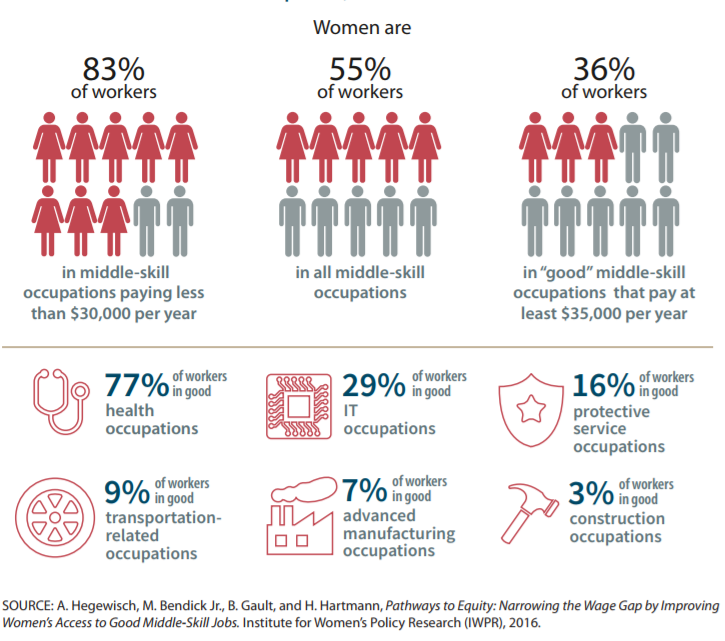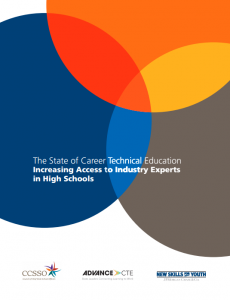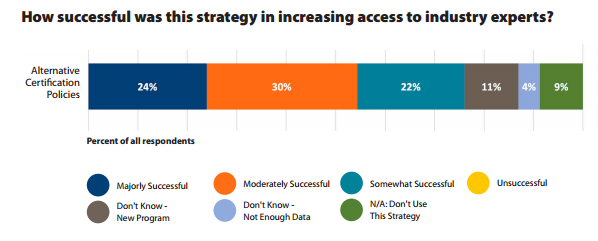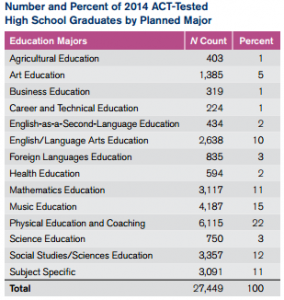 A lot has happened over the past few weeks on Capitol Hill, particularly with regards to Congressional efforts to reauthorize key pieces of legislation for K-12 and postsecondary education. With fall in full swing, we wanted to take a moment to re-cap all of the activity over the past few weeks as we look ahead for what the rest of the year has in store for the Career Technical Education (CTE) community. Below is Part II in a two-part series of autumnal legislative updates.
A lot has happened over the past few weeks on Capitol Hill, particularly with regards to Congressional efforts to reauthorize key pieces of legislation for K-12 and postsecondary education. With fall in full swing, we wanted to take a moment to re-cap all of the activity over the past few weeks as we look ahead for what the rest of the year has in store for the Career Technical Education (CTE) community. Below is Part II in a two-part series of autumnal legislative updates.
Senate CTE Caucus Highlights Importance of CTE within HEA
Late last month, the Senate Career Technical Education (CTE) Caucus hosted a briefing for congressional staff titled “Postsecondary Pathways to Success: Strengthening Career and Technical Education in the Higher Education Act.†John Cech, Deputy Commissioner for Academic and Student Affairs for the Montana University System who is also a NASDCTEc member and State CTE Director for Montana, participated in this briefing.
John’s remarks grounded the panel’s discussion with a sense of relevancy and urgency saying, in part, “. . . the basic infrastructure of our society depends largely on our nation’s ability to produce new graduates at the two-year college level, in addition to the university degrees that are the traditional focus of the national postsecondary dialogue.â€
The panel had four overarching recommendations for the reauthorization of the Higher Education Act (HEA) which would infuse the law with a much-needed focus on CTE:
- Expand Title IV financial aid access to support shorter-term CTE programs that lead to high-growth, high-demand industries and careers
- Reinstate year-round Pell and introduce other provisions that expand student access to federal financial aid to accelerate student learning and increase rates of completion
- Ensure that the next iteration of HEA supports innovative practices in postsecondary education such as competency-based education
- And finally, give strong consideration to dedicated funding opportunities within HEA for two-year colleges similar to the now expired Trade Adjustment Assistance Community College and Career Training (TAACCCT) grant program
Duncan Makes for the Exit as ESEA Work Continues
Earlier this month, U.S. Secretary of Education Arne Duncan announced that he will resign from his post at the end of the year. Duncan is the longest serving cabinet member in the Obama Administration and came into the position after serving as CEO of Chicago Public Schools for seven years.
John B. King Jr., who has been Deputy Secretary of Education since January of this year, will replace Duncan as the next Secretary of Education pending Senate approval.
Duncan’s tenure as the head of the U.S. Department of Education (ED), particularly the ESEA flexibility system granting waivers to states from many provisions contained in No Child Left Behind (NCLB), has been one of the main motivations behind Congressional activity to reauthorize the Elementary and Secondary Education Act (ESEA) this year.
As we have shared previously, both Chambers of Congress were successful in passing rewrites of the law earlier this summer. Currently, lawmakers from the Senate and House Education Committees have been engaged in conference negotiations to reconcile the differences between the two bills. These discussions are still ongoing.
More recently, Democratic Senators Murphy (D-CT), Warren (D-MA), and Booker (D-NJ) hosted a roundtable discussion with Secretary Duncan and Deputy Secretary King focused on accountability issues within ESEA reauthorization. Holding states and local communities accountable for student achievement has been one of the most polarizing issues during the reauthorization process for ESEA and many Congressional Democrats, along with the White House, hope to strengthen such accountability provisions in a final bill when conference negotiations wrap-up.
Despite the progress being made in ESEA conference negotiations, a pathway forward for a bill containing stronger accountability requirements than what is currently in either the Senate or the House rewrites— something the Obama Administration and many Democrats would like to see— remains an uphill battle. As with much of the Congressional agenda this fall, the outcome of the race to replace Speaker Boehner will likely have a significant impact on ESEA’s chances of passage in the 114th Congress. As the Thomas B. Fordham Institute points out, ESEA’s chances are a hard “maybe†at this point.
Obama Administration Pushes Forward on a Number of Higher Ed Initiatives
Congressional efforts to reauthorize HEA are still ongoing and in lieu of a comprehensive proposal from Congress, the Obama Administration has continued to prioritize higher education issues. For instance the Office of Management and Budget, recently released the Admisntration’s final set of ‘Agency Priority Goals’ which outlines ED’s objective to increase the percentage of adults aged 25-34 who have an associate’s degree or higher to nearly 50 percent by 2017.
Late in September, ED also released much anticipated guidance for experimental sites who are pursuing innovative models of awarding federal financial aid for competency-based education (CBE) programs. These sites were first announced in 2014 as part of the experimental sites initiative authorized under HEA. The new “CBE Experiment Reference Guide†can be used both for the institutions and accrediting bodies participating in the initiative, as well as for institutions who might like to pursue CBE programs in the future. More information on the guidance can be found here. U.S. Undersecretary of Education Ted Mitchell has also announced that ED intends to expand this initiative by the end of the year.
Another round the experimental sites initiative was announced earlier this week. Named the “Educational Quality through Innovative Partnerships†(EQUIP) experiment, ED is currently soliciting applications to support partnerships between colleges and universities and “non-traditional†providers of education, such as shorter-term job training programs or Massive Open Online Courses (MOOCs). Eligible programs would need to lead to a degree or certificate, articulate to academic credit, and be aligned to high-demand, high-growth economic sectors. More information on the announcement here.
Earlier this summer, the White House celebrated innovation within CTE and First Lady Michelle Obama announced that ED and her office’s “Reach Higher Initiative†would work together to launch a mobile app development challenge to create a user friendly tool for students to learn more about career pathways and other educational opportunities available to them. This month the First Lady officially launched the competition, making available $225,000. Applications are due no later than December 6, 2015—more information on the challenge can be found here and here.
Odds & Ends
- More than eighty colleges and universities announced their collective commitment to a new, more holistic, college application process that focuses more on student portfolios of work and less on entrance exams. More on the effort here.
- Senators Bennet (D-CO) and Rubio (R-FL) introduced the Higher Education Innovation Act, a bill that would create a five-year pilot program that offers an alternative pathway, focused on student outcomes, for institutional accreditation and related access to federal financial aid. Read the press release here.
- Senate CTE Caucus co-chairs, Kaine (D-VA), Portman (R-OH), and Baldwin (D-WI), along with Senator Capito (R-WV), introduced the “Creating Quality Technical Educators Actâ€. The bill would expand HEA’s teacher residency grant program to support more schools in recruiting and preparing CTE teachers by strengthening partnerships between secondary and postsecondary institutions. NASDCTEc endorsed and supported this legislation and more on the bill can be found here.
- The STEM Education Act was signed into law by President Obama late last week. The legislation formalizes computer science within the statutory definition for “STEM education†which is used for grant making opportunities through many federal agencies. More on the bill can be found here.
- The Association of Community Colleges (AACC), the Association of Community College Trustees (ACCT), and Higher Ed for Higher Standards (HEHS) announced yesterday that they will partner together to implement higher academic standards in secondary school to more effectively prepare students for college and career success. More information is available here and here.
Steve Voytek, Government Relations Manager
 “As a lifelong learner, I’ve always been intentional in my pursuit of professional development and growth in my career.”
“As a lifelong learner, I’ve always been intentional in my pursuit of professional development and growth in my career.”

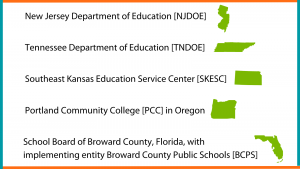
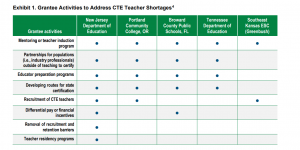
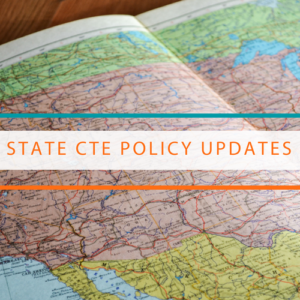 Teacher preparation programs are an important aspect of building an educator pipeline. While recruiting and certifying CTE teachers may vary slightly depending on the state, one fact is true among all school districts and education platforms: learners, regardless of their own backgrounds, benefit from diversity among their teachers. With CTE’s pivotal role in providing real-world connections to career pathways, a diverse staff of educators elevates learners’ exposure to different approaches and links to future careers. As state directors dedicated to creating
Teacher preparation programs are an important aspect of building an educator pipeline. While recruiting and certifying CTE teachers may vary slightly depending on the state, one fact is true among all school districts and education platforms: learners, regardless of their own backgrounds, benefit from diversity among their teachers. With CTE’s pivotal role in providing real-world connections to career pathways, a diverse staff of educators elevates learners’ exposure to different approaches and links to future careers. As state directors dedicated to creating  As educators, can we influence the world 10,000 years from now?
As educators, can we influence the world 10,000 years from now? A little over one year ago, Advance CTE launched
A little over one year ago, Advance CTE launched  All learners deserve to have quality educational experiences facilitated by individuals with passion, experience and expertise. The need for experts qualified to help ensure students gain the real-world experiences they need for success has been increasing dramatically. Individuals with industry expertise provide a perspective to students that traditional academic teachers may be unable to do, and can also help students explore and connect with particular career opportunities.
All learners deserve to have quality educational experiences facilitated by individuals with passion, experience and expertise. The need for experts qualified to help ensure students gain the real-world experiences they need for success has been increasing dramatically. Individuals with industry expertise provide a perspective to students that traditional academic teachers may be unable to do, and can also help students explore and connect with particular career opportunities. 